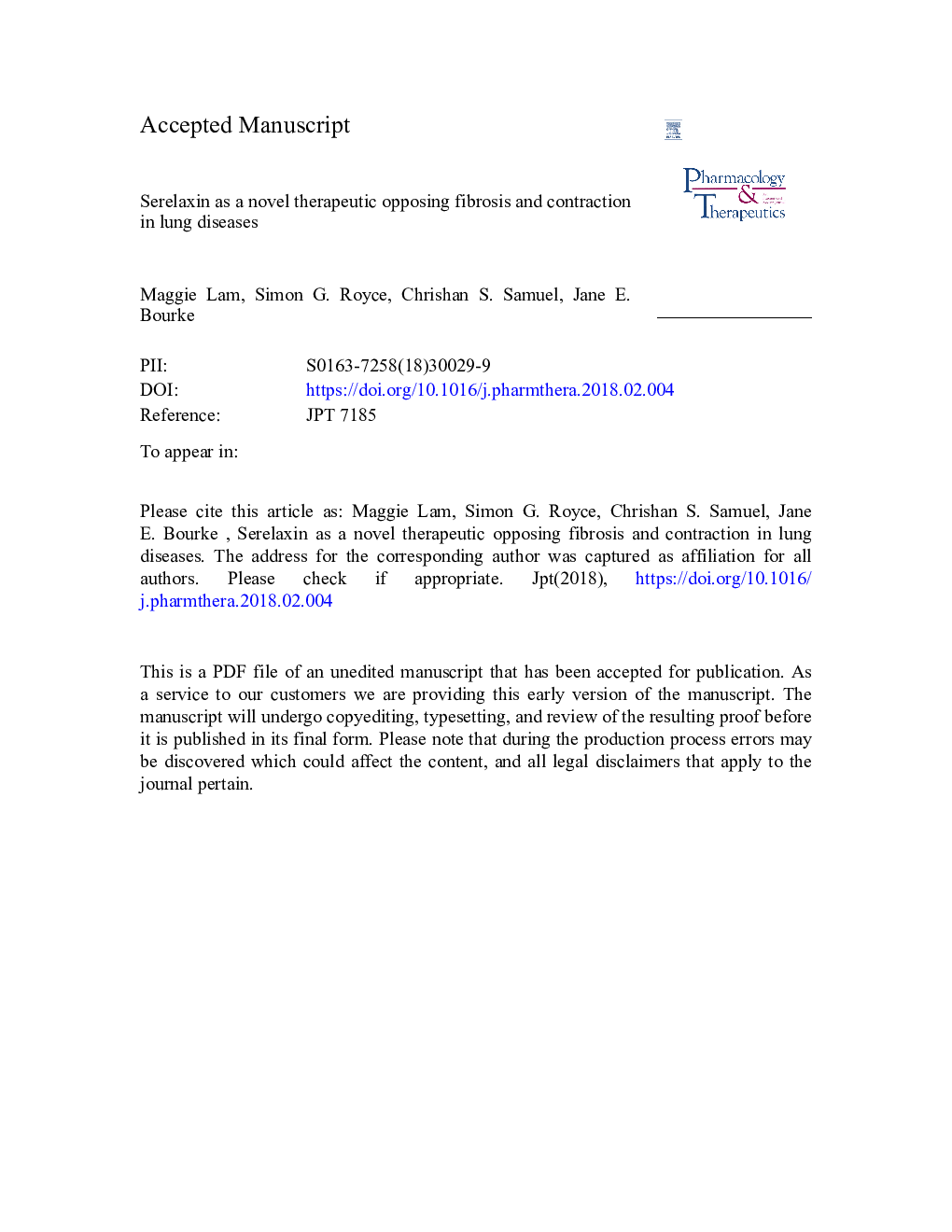| Article ID | Journal | Published Year | Pages | File Type |
|---|---|---|---|---|
| 8536801 | Pharmacology & Therapeutics | 2018 | 41 Pages |
Abstract
The most common therapies for asthma and other chronic lung diseases are anti-inflammatory agents and bronchodilators. While these drugs oppose disease symptoms, they do not reverse established structural changes in the airways and their therapeutic efficacy is reduced with increasing disease severity. The peptide hormone, relaxin, is a Relaxin Family Peptide Receptor 1 (RXFP1) receptor agonist with unique combined effects in the lung that differentiates it from these existing therapies. Relaxin has previously been reported to have cardioprotective effects in acute heart failure as well anti-fibrotic actions in several organs. This review focuses on recent experimental evidence of the beneficial effects of chronic relaxin treatment in animal models of airways disease demonstrating inhibition of airway hyperresponsiveness and reversal of established fibrosis, consistent with potential therapeutic benefit. Of particular interest, accumulating evidence demonstrates that relaxin can also acutely oppose contraction by reducing the release of mast cell-derived bronchoconstrictors and by directly eliciting bronchodilation. When used in combination, chronic and acute treatment with relaxin has been shown to enhance responsiveness to both glucocorticoids and β2-adrenoceptor agonists respectively. While the mechanisms underlying these beneficial actions remain to be fully elucidated, translation of these promising combined preclinical findings is critical in the development of relaxin as a novel alternative or adjunct therapeutic opposing multiple aspects of airway pathology in lung diseases.
Keywords
Amnion epithelial cellsET-1AECspKaAHFMCHPPARγOVAPKGSGCNOSERKRelaxinIPFTGFβMMPAHRMLC20RXFP1L-NMMAMSCsAADHEKAT2I/Rl-NAMEMAPKAsthmaAngiotensin IIendothelin-1Ovalbuminischemia-reperfusionBronchodilationChronic obstructive pulmonary diseaseCOPDAllergic airways diseaseTransforming Growth Factor BetaCigarette smokeAng IImyosin light chainMesenchymal stem cellshuman embryonic kidney cellsSoluble guanylate cyclaseidiopathic pulmonary fibrosisFibrosisMatrix metalloproteinasesMethacholinenitric oxide synthaseAirway hyperresponsivenessprotein kinase Aprotein kinase Gextracellular signal-regulated kinasesmitogen-activated protein kinasesPeroxisome proliferator-activated receptor gammaangiotensin type 2 receptor
Related Topics
Health Sciences
Pharmacology, Toxicology and Pharmaceutical Science
Pharmacology
Authors
Maggie Lam, Simon G. Royce, Chrishan S. Samuel, Jane E. Bourke,
